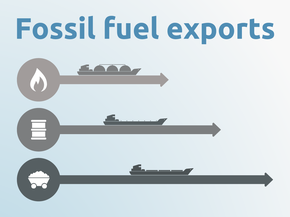Country summary
Overview
Costa Rica’s emissions could peak before 2030 due to new policies that support the electrification of its transport sector. Costa Rica has implemented a law to promote and incentivise transport electrification—the transport sector is Costa Rica’s largest greenhouse gas (GHG) emitter. Our analysis of the impact of this new law on private vehicles suggests that if electric vehicle penetration is high, emissions could peak in 2029. Additional emissions reductions are expected to come from the electrification of public transport: the National Plan for Electric Transport is expected to be published by the end of the year.
In addition to the efforts in the transport sector, Costa Rica has launched multiple initiatives to facilitate the implementation of its NDC. Its climate-related policies and programmes include the second phase of its National Programme for Carbon Neutrality—a carbon neutral certification scheme for businesses and municipalities, NAMAs (Nationally Appropriate Mitigation Actions) in the agricultural sector, and the National Energy Plan.
Costa Rica also has a national strategy designed to increase the size of its forestry sector sink. Costa Rica’s electricity generation already runs on a very high share of renewable sources, but emissions from transport, industry, and waste are expected to grow under current policies.
According to our analysis, Costa Rica will need to implement additional policies to reach its proposed 2030 climate targets, which we rate as “2°C compatible.”
Costa Rica is one of the few developing countries with an absolute and unconditional emissions reduction target in its Nationally Determined Contribution (NDC) The target aims to keep net GHG emissions below 9.37 MtCO2e in 2030 including Land Use, Land Use Change and Forestry (LULUCF), equivalent to a 25% reduction from 2012 emissions. Based on this, the CAT has estimated an emissions range for the NDC in 2030 of 13.7–15 MtCO2e excluding LULUCF. Based on this target, we rate Costa Rica’s 2030 NDC as “2°C compatible.”
Costa Rica’s NDC also states its long-term intention to become carbon neutral by 2085, but this contradicts the carbon neutral target of 2021 set out in the 2008 National Climate Change Strategy (ENCC), and a similar announcement by the President in 2017. The NDC also puts forward an indicative level of emissions (incl. LULUCF) of 11.5 MtCO2e for 2021 (equivalent to about 11.5% below 2010 emissions levels excl. LULUCF). If Costa Rica were to renew its commitment to carbon neutrality in 2021, as expressed in the ENCC, and maintain carbon neutrality into the future, the CAT would upgrade its rating to 1.5°C Paris Agreement Compatible. See Pledges and targets section for more detail.
Further analysis
Latest publications
Stay informed
Subscribe to our newsletter







